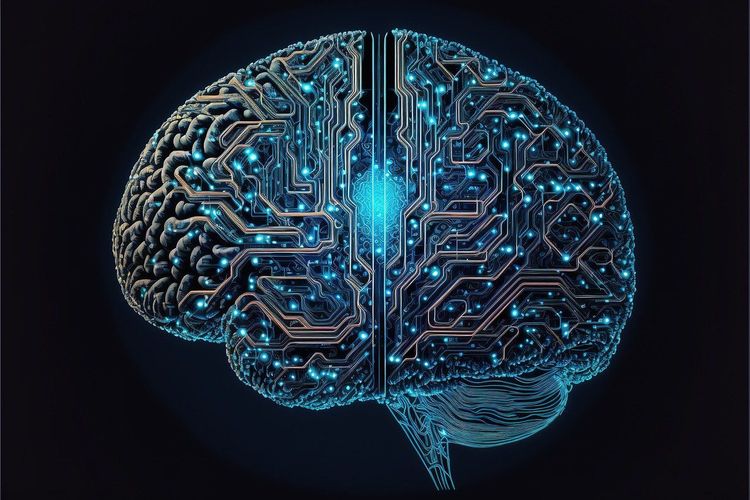Navigating the dynamic landscape of AI can be challenging. While we wait for a comprehensive AI solution to handle it for you, here’s a curated summary of the latest developments in machine learning, along with noteworthy research and experiments that warrant attention.
At its recent Connect conference, Meta unveiled a range of AI-powered chatbots for its messaging platforms — WhatsApp, Messenger, and Instagram DMs. These bots are currently accessible to selected users in the U.S. and are designed to emulate various personalities, even mimicking celebrities like Kendall Jenner, Dwyane Wade, MrBeast, Paris Hilton, Charli D’Amelio, and Snoop Dogg.
This initiative is Meta's latest strategy to enhance user engagement across its platforms, especially among younger audiences. According to a 2022 Pew Research Center survey, only 32% of internet users aged 13 to 17 reported using Facebook, reflecting a more than 50% decline from the previous year. The introduction of character-focused AI personalities aligns with a growing trend in the industry.
Take, for example, Character.AI, which allows users to create customizable AI companions with unique traits, such as Charli D’Amelio as a dance enthusiast or Chris Paul as a golf expert. This summer, Character.AI's mobile app amassed over 1.7 million new installs within a week, while its web app received more than 200 million visits monthly. Users were reportedly spending an average of 29 minutes per session — a figure that outpaces OpenAI’s ChatGPT by 300%, as interest in ChatGPT has waned.
This surge in popularity has drawn investment from major firms, including Andreessen Horowitz, which invested over $100 million, valuing Character.AI at around $1 billion.
In addition, there’s Replika, the controversial AI chatbot platform, which as of March counted about 2 million users, with 250,000 paying subscribers.
Another notable player is Inworld, which focuses on developing AI-driven characters for video games and interactive experiences. While Inworld hasn't disclosed user metrics, its potential for creating more animated NPCs has attracted investments from Disney and grants from Epic Games, the creators of Fortnite and Unreal Engine.
The appeal of AI chatbots with distinct personalities becomes evident. Unlike general-purpose chatbots like ChatGPT and Claude, which excel in professional contexts but lack charisma, character-driven bots promise more engaging interactions. However, the question remains: will these AI characters maintain their popularity? Meta is investing heavily in this new lineup, but history suggests that technological novelties often fade over time, leading to the next big innovation.
Here are some other significant AI stories to note from the past week:
- Spotify is testing AI-generated playlists: Code hints in the Spotify app suggest the platform may be working on generative AI playlists that users could customize using prompts.
- The earnings of artists using generative AI remain uncertain: Some companies, like Adobe, have set up funds and revenue sharing agreements to compensate artists contributing data for their generative AI models. However, the financial benefits for artists are still unclear.
- Google enhances its AI-powered search capabilities: Google has opened its generative AI search experience to teenagers, adding features to improve content context and training the AI to better recognize harmful queries.
- Amazon launches Bedrock and introduces CodeWhisperer for enterprises: Amazon announced the general availability of Bedrock, a managed platform offering generative AI models, along with an enterprise tier for CodeWhisperer, its AI code generation service.
- OpenAI explores hardware innovations: Reports indicate that renowned former Apple designer Jony Ive is in discussions with OpenAI’s Sam Altman about a significant AI hardware project. Meanwhile, OpenAI is preparing to release a more advanced version of its GPT-4 model featuring image analysis.
- ChatGPT incorporates voice features: OpenAI has expanded ChatGPT’s capabilities beyond text, announcing the addition of voice and image functionalities.
- The Writers Guild of America ends its strike: After nearly five months, the guild reached an agreement with Hollywood studios, with AI being a pivotal issue during negotiations. Amanda delves into the essential contract details.
- Getty Images launches an image generator: As one of the leading stock image providers, Getty Images has introduced a generative AI art tool touted as “commercially safer” than competing solutions. Before this, Getty was known for criticizing generative AI tools like Stable Diffusion, which was trained on part of its image library.
- Adobe brings generative AI to the web: Adobe has officially launched Photoshop for the web, now including AI-driven tools such as generative fill and generative expand after an extensive beta period.
- Amazon to invest billions in Anthropic: Amazon has agreed to invest up to $4 billion in the AI startup Anthropic, intensifying its competition with other major players like Microsoft, Meta, Google, and Nvidia in the booming AI sector.
In the realm of machine learning, the conversation continues. In my discussion with Anthropic CEO Dario Amodei about AI capabilities, he expressed confidence that there are no known hard limits — though he also acknowledged the absence of insurmountable challenges for LLMs (large language models).
Meanwhile, research is thriving. A project at the University of Edinburgh revisits the fundamentals of neural networks, inspired by the simpler yet efficient neural systems of insects. Despite their basic vision and memory capabilities, ants and other small insects navigate complex environments adeptly. The research team constructed a digital network based on insect neural behaviors and successfully navigated a small robot with minimal resources. This approach could benefit systems constrained by power and size limitations, showcasing the potential to learn from nature.
Color science is another area where human expertise is vital. Despite advances, replicating colors accurately remains challenging, especially for skin tones, reflecting biases in machine learning systems trained on limited data. Sony aims to address this with a new metric for skin tone that more effectively defines it across a spectrum while considering perceived light and dark levels, revealing biases not only in lightness but also in skin hue.
In terms of photo enhancement, Google has introduced a technique called RealFill, a generative plug-in that can intelligently fill gaps in images with contextually appropriate elements, such as balloons at a birthday party. While it may not always produce perfect results, judicious use could significantly enhance image quality.
Lastly, recent advancements in machine learning show promise in predicting the number of aftershocks following significant earthquakes. Researchers emphasize that while these models won’t predict earthquakes themselves, they can analyze data post-event to characterize aftershocks more accurately. The capabilities of these models may aid seismologists in understanding earthquake patterns, though preparation remains essential since forewarning does not prevent seismic events.
In summary, the AI landscape is continuously evolving, brimming with innovations and challenges that promise to reshape our digital interactions.







